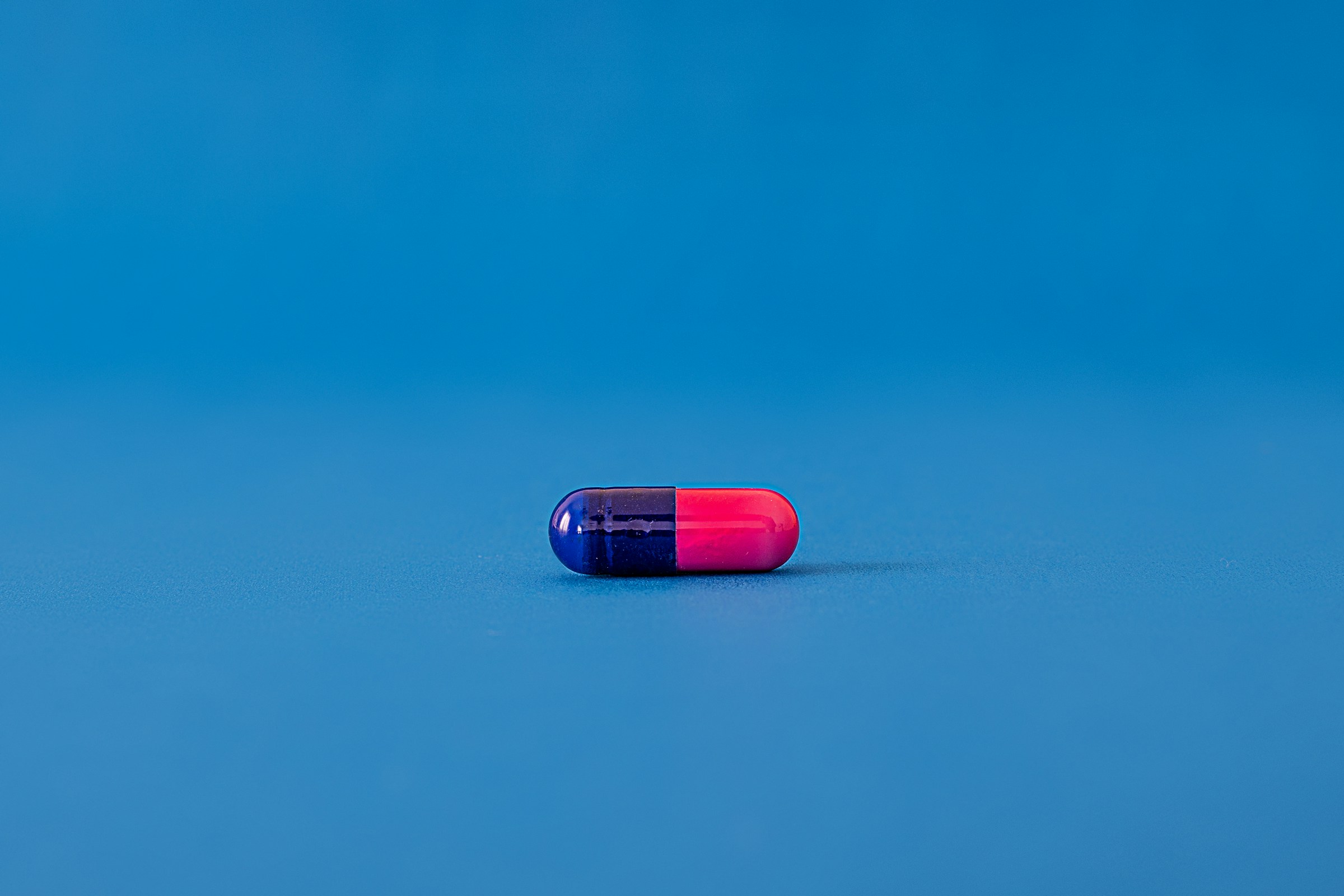
Is it better to take vitamin D in the morning or at night? Experts share what time of day is best for optimal health and absorption.
Do you take vitamin D supplements? If so, do you take them in the morning or at night? You may be surprised to learn that your vitamin D intake timing can influence how well your body absorbs this vital nutrient. Some studies suggest that taking vitamin D at night may disrupt sleep, while others have found no links between vitamin D and sleep. So, is it better to take vitamin D in the morning or at night? This article will explore the research on vitamin D absorption and sleep and help you confidently choose the best time to take vitamin D for optimal health benefits. But, How to Measure Sun Exposure?
Daily sunlight exposure tracker can help you achieve your goal of understanding vitamin D absorption by tracking your sunlight exposure. Sun exposure is the body's natural way of producing vitamin D.
Table of Contents
Is It Better to Take Vitamin D in the Morning or at Night?

Vitamin D is a fat-soluble vitamin, meaning it’s best absorbed with a meal containing healthy fats. The timing—morning or night—doesn’t affect absorption or sleep quality. While there’s no strict rule, some people prefer morning to avoid potential sleep disturbances. Expert opinions support this notion and highlight various factors that may affect the timing of vitamin D absorption.
The Importance of Vitamin D
Regarding the supplement aisle, multivitamins, omega-3s, and probiotics might score more shelf real estate. If that multi doesn’t come with a dose of vitamin D, your doctor might recommend adding another pill to your routine. Roxana Ehsani, M.S., RD, CSSD, a Miami-based board-certified sports dietitian, explains that vitamin D is one of four fat-soluble vitamins (A, E, and K are the others). It’s also a hormone our body creates after exposure to the sun, and it plays “many important roles in our body,” adds Ehsani.
These include:
Supporting your immune system
Muscle and nerve function
Your body’s ability to absorb calcium and more
Why Many People Are Vitamin D Deficient and How to Boost Your Intake Naturally
Even though vitamin D is critical for overall health, research suggests that an estimated 25% of Americans are deficient in it. This could be because there are few food sources of vitamin D, and many people don’t see sunshine during winter, live in regions with limited sunlight, and/or keep their skin covered while al fresco. The average adult’s recommended Daily Value of vitamin D is 20 micrograms (800 IU or international units). For reference, one egg and a 3-ounce can of tuna each have above 1 mcg, 3 ounces of sockeye salmon delivers around 12 mcg, and 3 ounces of trout offers around 14 mcg. Unless you’re taking a spoonful of cod liver oil (34 mcg) or eating salmon or trout daily, it can be challenging to meet that mark only through food since most food sources of vitamin D offer small amounts.
The Decline of Dietary Vitamin D and Why Proper Supplement Timing Matters
In the U.S., people get most of their dietary vitamin D from fortified milk containing 100 to 150 IU per 8-ounce serving. But you'd need to drink a quart or more of milk daily to reach the DV—milk consumption has declined in recent years, a factor that some experts cite when discussing increased vitamin D deficiency. That’s why many people take a vitamin D supplement. You want to ensure that you’re taking the right amount and that your body is absorbing it properly. Read along to learn when to take your vitamin D supplement and what factors to consider.
Factors Affecting Vitamin D Absorption
Health Conditions
Several conditions can influence an individual's vitamin D levels (or needs). These include:
Osteoporosis or osteopenia
Depression
Kidney or liver disease
Family history of neurological conditions
According to David Davidson, M.D., a cardiologist with Endeavor Health Medical Group in greater Chicago, it’s essential for “people with absorption issues, like inflammatory bowel disease or post gastric bypass surgery,” to work with their doctors to dial in their dose and receive personalized guidance about when to take vitamin D. Body size can also alter absorbency and dosing, so ask your doctor for an individual recommendation before you shop for supplements—and start taking vitamin D.
Individual Preference
Regardless of why you’re including a vitamin D supplement in your regimen, it’s essential to consider when to remember to take it. It might sound obvious, but it’s difficult to reap all the health benefits of vitamin D if you forget to take it most of the time. Many people do well by habit stacking or pairing the routine of taking vitamin D with something else they do daily on autopilot. Keep this in mind as you consider when to take your supplements. Ehsani shows how to put this into practice: “If you always brush your teeth in the morning after breakfast, for instance, can you place your vitamin D supplements next to your toothbrush to remind you to take it each day?”
Dietary Habits
Since vitamin D is a fat-soluble vitamin, it’s wise to pair it with a meal with high-fat foods to maximize absorption, such as:
Avocado
Nuts
Seeds
Full-fat dairy
Fatty seafood
Type of Vitamin D
There are two types of vitamin D:
D2
D3
UV-grown plants, fungi, and fortified foods deliver D2, while we get D3 from sunlight and animal-based ingredients. While both are important and beneficial, vitamin D3 is more bioavailable than vitamin D2. This means that your body uses vitamin D3 more efficiently, so you might need a higher dose of vitamin D2 to achieve the same effects as you might with a supplement that includes just D3. Before starting any new supplement regimen, talk to your healthcare provider about the best form of vitamin D for you. And if you already take a vitamin D supplement, confirm with them that you’re taking the proper form.
Morning vs. Evening
We’ll cut to the chase: According to the current scientific consensus, Ehsani and Davidson agree that it doesn’t matter when you take your vitamin D supplement. Many people find it handy to take supplements in the morning before the day sweeps them away. Others like to store them in a drawer near the kitchen, cleaning supplies to pop after tidying up after dinner. It shouldn’t make a substantial difference in absorption rates whether you swing to one side or the other, although it’s easiest to remember if you pick one time and stick with it.
How to Take Vitamin D for Maximum Absorption: Why Pairing It with Healthy Fats Matters
With or Without Meals “The timing of when to take the vitamin D supplement shouldn’t matter, but it should be taken with food,” Davidson confirms. “Because it’s a fat-soluble vitamin, food, specifically healthy fats, will help with the absorption of vitamin D.” For example, if you tend to have almond butter toast each morning, “consider taking it with that meal, as almond butter contains healthy fats,” Ehsani advises.
Or, if you like to serve dinner with a side salad topped with a handful of walnuts and drizzled with a vinaigrette, take your vitamin D before you sit down to dig in. “It may be impractical for you to take it with meals if you eat a majority of your meals away from home and can’t realistically carry the vitamin D supplement with you everywhere you go,” Ehsani acknowledges. So, if that’s not a realistic proposition, tell your doctor about your schedule and when you think it might better fit, and ask for their runner-up recommendation.
Is There a Best Time?
As with any new medication or supplement, you must check with your healthcare provider to determine the best time. As a general rule, though, “the ‘best’ time is what works best for you,” Ehsani says. Ideally, you’ll take your vitamin D supplement with a meal or snack that includes a source of fat. But if that strategy feels challenging to stick with or if you notice any nausea, constipation, noticeable appetite shifts, or other adverse symptoms after taking your supplement at that time of day, be sure to chat with your doctor.
Finding the Best Time to Take Vitamin D: Consistency Over Timing for Better Results
How can you tell if you need to change when you take vitamin D? If you regularly forget to take your vitamin D supplement, consider changing when you take it. That’s the only reason you may need to change when you take your supplement. Vitamin D supplements are easily absorbed. Even if you take them without food, your body will absorb the vitamin, increasing your levels. So, pick the time of day that’s easiest for you to remember to take it. You can also remind yourself to take medication by leaving the pill bottle somewhere you can easily see it or setting a reminder on your phone.
Related Reading
• Can You Get Vitamin D in the Shade
• Do You Have to Be in Direct Sunlight to Get Vitamin D
• Does Vitamin D from the Sun Make You Sleepy?
• How to Get Vitamin D in the Winter
How Much Vitamin D Should Adults Take Per Day?

Vitamin D has a recommended dietary allowance (RDA). The RDA reflects the average daily amount of vitamin D people should consume to meet nutrition requirements. Deficiency can lead to serious health problems, including poor bone health and weakened immunity. The vitamin D RDA differs for various age groups and life stages. Adults aged 18 to 70 need 600 IU (15 mcg) of vitamin D daily. The RDA increases for older adults because the body becomes less efficient at synthesizing vitamin D from sunlight. Adults aged 71 and older should get 800 IU (20 mcg) daily. Pregnant and lactating people also need 600 IU (15 mcg) of vitamin D each day to support their health and the health of their babies.
Finding Your Upper Limit for Vitamin D
Understanding your tolerable upper limit, or UL, for vitamin D is crucial for avoiding potential toxicity from too much vitamin D. When evaluating your total vitamin D intake, consider:
Your food intake
Sunlight exposure
Any supplements, including multivitamins
The amount of vitamin D for healthy adults to take from supplements generally regarded as safe is up to 1,000 to 2,000 IUs daily. The UL reflects the maximum daily amount of a vitamin that is unlikely to cause any adverse health effects. The upper limit for vitamin D for all adults 18 and older is 4,000 IU (100 micrograms).
The Risks of Too Much Vitamin D
Toxicity. Too much vitamin D is toxic because it affects calcium in the body. Excessive vitamin D intake leads to very high calcium levels, which causes:
Vomiting
Muscle weakness
Dehydration
Kidney stones, among other symptoms
In severe cases, vitamin D toxicity causes kidney failure, irregular heartbeat, soft tissue calcification, and even death. Vitamin D toxicity is unlikely to result from food sources or sunlight alone. Instead, it occurs from regularly taking high-dose vitamin D supplements. For further guidance, consult your:
Healthcare provider
A registered dietitian
Nutritionist
Pharmacist
Related Reading
• Can You Get Vitamin D from the Sun Through a Window?
• Best Time of Day to Get Vitamin D from the Sun
• Can You Get Vitamin D on a Cloudy Day?
• Can You Get Vitamin D from the Sun After 4 PM?
Should Everyone Take a Vitamin D Supplement Every Day?

Whether or not you should take vitamin D depends on a few factors. With all the health benefits of vitamin D, everyone should take a vitamin D supplement. But most healthy adults don’t need to. That’s because most people get enough vitamin D through their food and skin when exposed to sunlight.
Who Should Take a Vitamin D Supplement and How to Know If You’re at Risk for Deficiency
Experts do recommend a daily vitamin D supplement for:
Children between the ages of 1 to 18
Pregnant people
People over the age of 75
People with prediabetes
People with certain medical conditions may also be at risk for vitamin D deficiency, including those with:
Liver or kidney disease
Cystic fibrosis
Celiac disease
Inflammatory bowel disease
A history of bariatric surgery
Some anti-seizure medications, steroids, or cancer treatments—can also lower vitamin D levels.
If you’re at risk of having low vitamin D, your primary care provider may ask you to do a blood test to check your levels. If it’s low, they’ll likely recommend a vitamin D supplement.
Where to Get Vitamin D
Vitamin D is essential for bone health and immune function. It can be obtained from both food sources and sunlight. While some foods naturally contain vitamin D, others are fortified to help boost your intake. This overview will highlight key natural and fortified sources of vitamin D and the role of supplements and sunlight exposure in maintaining adequate levels. Again, suppose you regularly consume any or all of the sources below, including multivitamins. In that case, you should check all your labels to ensure you do not consume too much vitamin D.
Food Sources of Vitamin D
Some foods naturally contain vitamin D, whereas others are fortified.
Natural sources of vitamin D include:
Cod liver oil (450 IU per teaspoon or 75% of your daily value, DV)
Farmed rainbow trout (645 IU per cooked 3-ounce serving, 108% DV)
Mushrooms (0.4 IU per cup of sliced white mushrooms)
Sardines (180 IU per 3.75-ounce can serving, 30% DV)
Sockeye salmon (570 IU per cooked 3-ounce serving, 95% DV)
Fortified Foods
Fortified foods have vitamin D added to boost the nutrition content.
Fortified sources of vitamin D include:
Almond milk (105 IU per 8-ounce serving, 18% DV)
Breakfast cereals, 2% cow’s milk (110 IU per 8-ounce serving, 18% DV)
Orange juice (105 IU per 8-ounce serving, 18% DV)
Soy milk (110 IU per 8-ounce serving, 19% DV)
Supplements
Based on your current vitamin D levels, you may need a supplement. Vitamin D supplements abound with varying dosages. For adults, they typically range from 400 to 50,000 IUs.17 Taking over 4,000 IUs a day of vitamin D may not be advisable unless your healthcare provider has suggested it.
Vitamin D2 vs. D3: Choosing the Right Supplement Based on Your Needs and Seasonal Factors
Vitamin D supplements exist as ergocalciferol (vitamin D2) and cholecalciferol (vitamin D3). Although there is no consensus on which supplement form is best, some research suggests that vitamin D3 is better at maintaining circulating nutrient levels during the fall and winter. If you live in the northern hemisphere, consider evaluating your vitamin D levels and possibly supplementing from October through March. Most multivitamins contain 400 to 600 IU of vitamin D, around the daily amount needed for adults. Choose a supplement based on your vitamin D blood test results.
Sunlight
Your body produces vitamin D when your skin is exposed to sunlight. Ultraviolet (UV) rays act on prohormone (hormone precursor) vitamin D3 in the skin to trigger a series of reactions that result in the active form of vitamin D. Researchers recommend exposing your face, arms, hands, and legs to sunlight between 10 a.m. and 4 p.m. at least twice weekly for five to 30 minutes to get vitamin D from the sun.
Balancing sun damage with vitamin D production is challenging. Using sunscreen can prevent your body from producing vitamin D. How much vitamin D you get from the sun depends on the time of day you go outside and your use of sunscreen or skin-protecting clothing.
Download Our App to Track your Daily Sunlight Exposure Today

SunSeek helps you optimize your daily sunlight exposure by tracking and providing personalized recommendations based on your location, skin type, and health goals. The app combines real-time UV monitoring with guided outdoor activities to help you throughout the year:
Improve sleep
Boost energy levels
Maintain optimal vitamin D levels
By aligning your daily routine with natural light cycles, SunSeek makes harnessing sunlight's health benefits easy while ensuring safe exposure through personalized timing recommendations and cloud coverage forecasts.
Download our app now to track your daily sunlight exposure.
Related Reading
• Vitamin D from the Sun Benefits
• Benefits of Sunlight for Skin
• Best Sun Tracker App
• Vitamin D3 Near Me
• Laying in the Sun


